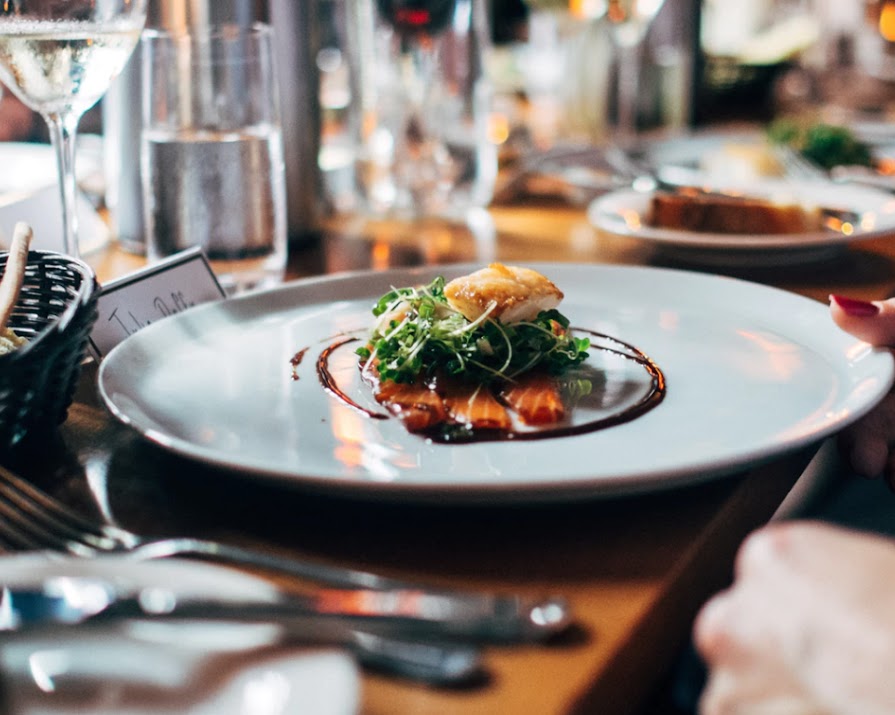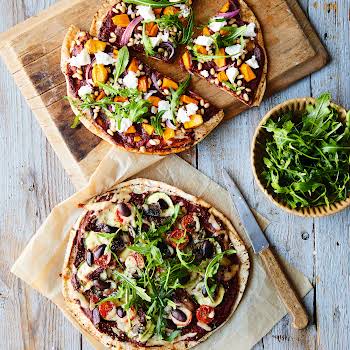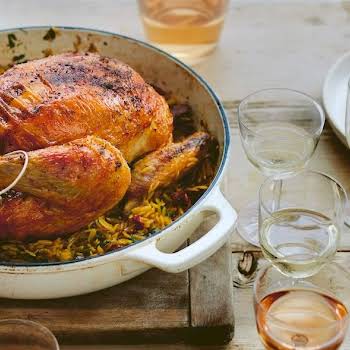
By Ali Dunworth
16th Feb 2019
16th Feb 2019
Ali Dunworth looks forward to see where, and what, we’ll be eating and drinking this year…
The last few years have been very focused on what looks good in an Instagram square tile, but I say this year, let’s forget about the social media scroll and get back to being excited about great food – who’s cooking it and where we can eat it. is is not a list of “must eats”, fads or passing food trends, but rather a round-up of some of the really exciting things that are happening in food in Ireland right now – forged by people and places that are here to stay.
The Cork Michelin Trail
There’s nothing new about Cork being an epicentre of great gastronomy in Ireland – the entire county has long been synonymous with exceptional food, giving us plenty of artisan food producers over the years, great restaurants and, of course, the institution that is Ballymaloe.
But in 2018, Cork was thrust into the international limelight when three restaurants were awarded Michelin stars – Mews in Baltimore, Restaurant Chestnut in Ballydehob and Ichigo Ichie in Cork city, with the last two only opening in April. It’s put Cork on a world culinary map that will bring a new type of hungry tourist to the county.
At Ichigo Ichie, chef Takashi Miyazaki has only 25 seats and serves a kaiseki multi-course tasting menu with elaborately prepared dishes that represent the seasons. He tells me he’s spoken to his guests, and they are keen to dine in all three of the restaurants. “We, the three chefs are hoping to collaborate and create a tantalising triangle trail – Ballydehob, Baltimore and Cork City.”
 Takashi Miyazaki
Takashi Miyazaki
In Ballydehob, Rob Krawczyk and his partner Elaine Fleming opened an intimate 18-seater restaurant in a former pub. They’ve certainly noticed the impact of starred recognition. “It has been huge. Guests are travelling solely to dine in all three restaurants, and we have really noticed the high volume of people that are travelling long distances to experience dinner with us. It’s really wonderful.”
And then there is Mews in Baltimore, a unique seasonal restaurant creating new Irish cuisine using the extraordinary ingredients of West Cork to full effect.
And it’s not just chefs putting Cork on the international map. Fingal Ferguson is well known for his family’s cheese making and his charcuterie business, but what was once his sideline of knife making has been gaining momentum in recent years, so much so that he has had to close the waitlist for his knives. Argentine celebrity chef Francis Mallmann showed off his completed set on Instagram last year, with a caption proclaiming them “the best in the world”.
More seafood
For an island country, Ireland has been notoriously bad at eating the wonderful variety of seafood available to us, but there is a cohort of chefs and suppliers working hard to change this.
Niall Sabongi (Klaw and The Seafood Cafe, Dublin) is touting the fish collar, a meaty part of the fish between the head and the fillet, as the next big thing. “It’s hugely popular in Japan and San Diego, but here it’s the part of a fish that we usually just throw away.”
He cooks it hot and fast on a plancha grill and serves it drizzled in chimichurri to be eaten like chicken wings, with your hands, snack style. “It hasn’t fully caught on just yet, but I think I’ve nailed it!” He hopes it will be a staple in his newest venture opening this year, The Urban Monger in Glasnevin – a wholesale fish shop where you can eat, shop, have a glass of wine and learn to cook your fish.
“The idea is you can see all the working elements of what we are doing. It’s going to be full-on interactive.” He plans to add a smokehouse and the first fish ageing room in Ireland.
 Niall Sabongi
Niall Sabongi
In Cork, Takashi Miyazaki has been serving aged fish as part of his tasting menu in Ichigo Ichie. He says it’s a bit different to ageing meat: “It’s best not to dry age it. Fish has a different texture to beef. There is no connective tissue to break down. To age the fish, the most important thing is to keep it moist and at a consistent temperature.”
Niall agrees that texture is key: “It gets firmer, deeper, developed. Not shy, but more meaty. What it does to the skin is just amazing. I did it to a turbot, and the skin was like pork crackling when it was put in the pan. Salmon skin went like chicken skin – tiny little bubbles right the way through.” Niall says Mickael Viljanen in Michelin-starred The Greenhouse in Dublin will be keen to try it out. And getting chefs to experiment with fish is key to getting us to try them, says Stefan Griesbach from Gannet Fishmongers in Galway.
“People are changing the way they eat fish, but I want chefs to take a bit more risk. They all want the well known and fine fish, like turbot.” Some, though, are happy to experiment. “Martin O’Donnell in the West Restaurant at The Twelve Hotel in Barna tries lots of different things; he has a tasting menu, so he can afford to.” He lists Jess Murphy in Kai, Galway as a customer who takes plenty of fish from him, and it’s also one of his own favourite places to eat fish. “Jess takes monkfish, hake, black pollock for her fish fingers – a bit of everything.”
Live fire cooking and fine meat
Yes, live-fire cooking is essentially barbecuing, but this recent incarnation is a little different to our usual experience of standing in the back garden, sheltered under an umbrella, flipping burgers. Barbecuing has been elevated to an art form that exploded in London restaurants in 2018 (see Temper, Brat, Smoking Goat, and Kiln) and is set to have a similar ripple effect in Ireland.
Andy Noonan, who runs The Big Grill barbecue festival, has seen a huge increase in Irish chefs getting involved in fire cooking. He brings barbecue chefs from around the world to Dublin every summer and sees Irish chefs scrambling to cook at the festival and learn from them. He cites Grainne O’Keefe as the standout, homegrown expert. She’s been paving the way in Dublin, cooking all her meat, fish and plenty more on a charcoal grill at Clanbrassil House since 2017.
Related: 10 of the most brilliant breakfasts in Dublin
In neighbouring Bastible, Barry FitzGerald has added a Konro (Japanese yakitori grill) to his kitchen, while at Ichigo Ichie, Takashi has a Japanese charcoal grill built into the kitchen. Kwanghi Chan just opened Bowls on Parnell Street, Dublin, where he’s cooking over three in-house Big Green Eggs. It’s a casual, clever approach to cooking meat, fish and vegetables, which has led to an increased focus on sourcing really great meats.
Again, Grainne O’Keefe is setting the standard, rotating rare breed meats from smaller producers and really letting them sing. She uses Peter Hannan in Moira, Irish olive-fed Wagyu beef, and Higgins Butchers in Sutton.
Related: Eight great spots to eat Japanese in Dublin
Meanwhile, Eavaun Carmody’s Killenure Dexter beef has been popping up on menus all over the country. As chefs start to focus on adding more fish and plant-based options, it makes sense for them to start putting the best meat they can on their menus. Andy Noonan is sure that for 2019, “without doubt, we’ll see a focus on rare-breed meat, especially beef”. This fits nicely into the growing world of hyper-local sourcing.
Wine Bars
The days of only being offered quarter bottles of red or a glass of mass-produced pinot grigio as standard are hopefully coming to an end. Ireland has seen a brilliant change in the wine scene over the last few years, with bars, cafe?s and restaurants serving drinkable, affordable, well-made bottles with a growing focus on natural options (made with minimal chemical and technological intervention).
Pascal Rossignol of Le Caveau has been importing natural wines since 2008, and says he’s seen a massive change in recent years. “When we first brought these wines to Ireland, people were unsure what to make of them.” Colm McCan in Ballymaloe House was an early adapter, taking Pascal’s entire selection (20 bottles) that first time, and Pascal has been working with L’atitude 51 in Cork since 2011.
“They have an incredible list of more than 100 wines, with 80% of them natural ones.” In Dublin, he credits places like Green Man Wines in Terenure and Loose Canon on Drury Street with paving the way more recently for natural, biodynamic and wines from independent makers and growers.
 Loose Canon
Loose Canon
“It’s exploding this year. There are five or six importers now.” The folks at Delahunt are about to open Frank’s Pork and Bacon Shop, a wine bar in a former butchers. Owner Darren Free says, “The plan is to be a neighbourhood wine shop with a large communal table in the centre for guests to enjoy wine and snacks. Food will also retain some of the history of the butchers with a casual feel.”
Coffee shops are getting in on the game too. First Draft in Dublin’s Portobello and Granthams off Camden Street both opened for evenings in late 2018, serving fun wines and small plates.
Rift Coffee in Limerick launched an evening menu with snacks and a concise and creative wine list – there’s an orange, rose and sparkling on there. The great thing is, everyone seems to have the same aim – to pour and introduce new, delicious wines focusing on the fun and forgetting about wine’s usual intimidating reputation.
Hyper-local
Again, this is not a new phenomenon in Ireland – we have plenty of wonderful restaurants around the country growing their own, sourcing local fish, foraging and more. So what makes hyper-local new, other than a buzzy word?
Growers and producers have started to work with chefs and restaurants more to supply them with ingredients that might otherwise be imported, and chefs and kitchens are going above and beyond looking for alternatives to importing.
An exciting example of this is Aimsir, due to open in Celbridge, Co Kildare in March. Cornwall-born chef Jordan Bailey and his wife, Danish front of house manager Majken Bech Christensen both previously worked at Maaemo, a three-Michelin-starred Norwegian dining room. For Aimsir, they’ve really committed to their challenge of exploring the Irish larder, using exclusively native Irish ingredients, even finding a farmer growing sugar beet to make sugar for them to use in the restaurant (once a buoyant Irish industry, we ceased commercial sugar production in 2005).
 Aimsir
Aimsir
A pop-up series of dinners in November last year saw them showcase their meticulous sourcing with honey from bees onsite, vegetables and fruits from their garden, plenty of locally foraged ingredients, and butter made in-house from raw micro-dairy cream.
What they can source dictates their menu, as opposed to writing a menu and then sourcing to suit that. Farmers like McNally’s in North Co Dublin are growing produce that traditionally would have been imported because they have chefs that want to buy and use these products – their Padro?n peppers were one of the most sought-after items last summer. Peter and Marita Collier of Drummond House in Co Louth started growing garlic in 2014, and by 2017 had grown into the largest producers of garlic in Ireland; they’re now embarking on a similar journey with asparagus.
Chef Keith Coleman, whose in influence can be seen on many cafe? menus around Dublin, believes working with the producers is crucial. “Having an ongoing dialogue and giving feedback on what you’re using can serve to improve not only the quality of that product, but also how best to unlock its potential, whether that be ageing, storing or prolong its integrity. It’s simply not good enough to use it and have their name on the menu. Respect and support the producer, and the same will transfer to the product and onto the plate.”
Feature image: Jay Wennington on Unsplash
This article first appeared in the January/February issue of IMAGE magazine.
























